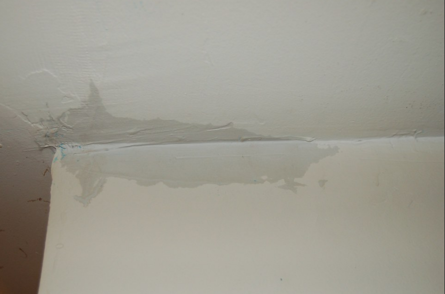Do's as well as Don'ts Throughout Water Damage Emergencies.
Do's as well as Don'ts Throughout Water Damage Emergencies.
Blog Article
They are making several great pointers on the subject of Reducing Your Risk Of Water And Fire Damage At Home overall in the article underneath.

Though water gives life, water intrusion on components where it's not meant to be can lead to damage. It can peel away surface areas as well as erode the foundation if the water saturates into your structure. Mold and mildew as well as mildew also grow in a moist atmosphere, which can be dangerous for your health. Residences with water damages smell moldy and old.
Water can come from many resources such as tropical cyclones, floodings, burst pipelines, leaks, and also drain issues. In case you experience water damages, it would be excellent to know some safety and security preventative measures. Here are a couple of standards on how to manage water damage.
Do Prioritize Residence Insurance Coverage
Water damages from flooding dues to hefty winds is seasonal. However, you can likewise experience a sudden flood when a damaged pipe instantly bursts right into your home. It would certainly be best to have residence insurance that covers both disasters such as natural disasters, and also emergency situations like broken plumbing.
Don't Neglect to Switch Off Utilities
In the event of a catastrophe, specifically if you live in a flood-prone area, it would certainly be suggested to turn off the main electrical circuit. This cuts off power to your entire residence, protecting against electric shocks when water comes in as it is a conductor. Do not forget to transform off the primary water line shutoff. When floodwaters are high, furniture will walk around and create damages. Having the major shutoff shut down prevents further damage.
Do Remain Proactive as well as Heed Weather Condition Notifies
Pay attention to emptying cautions if you live near a river, creek, or lake . Doing so reduces possible home damage.
Don't Disregard the Roofing System
You can prevent rainfall damages if there are no openings and leaks in your roofing system. This will stop water from moving down your wall surfaces and saturating your ceiling.
Do Pay Attention to Little Leaks
A burst pipeline does not occur overnight. You may notice gurgling paint, peeling off wallpaper, water touches, water discolorations, or leaking noises behind the walls. Have your plumbing fixed prior to it results in substantial damages.
Don't Panic in Case of a Burst Pipeline
Maintaining your presence of mind is important in a time of situation. Worrying will just compound the trouble due to the fact that it will stifle you from acting quickly. When it pertains to water damage, timing is vital. The longer you wait, the even more damage you can anticipate. Thus, if a pipeline bursts in your house, instantly shut down your primary water valve to cut off the resource. Then disconnect all electrical outlets in the location or shut off the breaker for that part of your home. Lastly, call a reliable water damages remediation professional for support.
Water gives life, water invasion on components where it's not supposed to be can result in damage. Houses with water damages scent old and moldy.
Water damage from flood fees to hefty winds is seasonal. You might see bubbling paint, peeling wallpaper, water streaks, water stains, or leaking noises behind the wall surfaces. When it comes to water damages, timing is key.
Some Do's & Don't When Dealing with a Water Damage
DO:
Make sure the water source has been eliminated. Contact a plumber if needed. Turn off circuit breakers supplying electricity to wet areas and unplug any electronics that are on wet carpet or surfaces Remove small furniture items Remove as much excess water as possible by mopping or blotting; Use WHITE towels to blot wet carpeting Wipe water from wooden furniture after removing anything on it Remove and prop up wet upholstery cushions for even drying (check for any bleeding) Pin up curtains or furniture skirts if needed Place aluminum foil, saucers or wood blocks between furniture legs and wet carpet Turn on air conditioning for maximum drying in winter and open windows in the summer Open any drawers and cabinets affected for complete drying but do not force them open Remove any valuable art objects or paintings to a safe, dry place Open any suitcases or luggage that may have been affected to dry, preferably in sunlight Hang any fur or leather goods to dry at room temperature Punch small holes in sagging ceilings to relieve trapped water (don't forget to place pans beneath!); however, if the ceiling is sagging extremely low, stay out of the room and we'll take care of it DO NOT:
Leave wet fabrics in place; dry them as soon as possible Leave books, magazines or any other colored items on wet carpets or floor Use your household vacuum to remove water Use TV's or other electronics/appliances while standing on wet carpets or floors; especially not on wet concrete floors Turn on ceiling fixtures if the ceiling is wet Turn your heat up, unless instructed otherwise

As a devoted person who reads about What You Can Do At Home To Prevent Fire And Water Damage, I think sharing that piece of content was really useful. Liked our content? Please share it. Help another person locate it. Thank-you for going through it.
Report this page